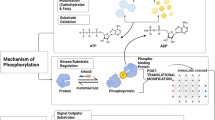Abstract
Following muscle damage, fast- and slow-contracting fibers regenerate, owing to the activation of their satellite cells. In rats, crush-induced regeneration of extensor digitorum longus (EDL, a fast muscle) and soleus (a slow muscle) present different characteristics, suggesting that intrinsic differences exist among their satellite cells. An in vitro comparative study of the proliferation and differentiation capacities of satellite cells isolated from these muscles is presented there. We observed several differences between soleus and EDL satellite cell cultures plated at high density on gelatin-coated dishes. Soleus satellite cells proliferated more actively and fused into myotubes less efficiently than EDL cells. The rate of muscular creatine kinase enzyme appeared slightly lower in soleus than in EDL cultures at day 11 after plating, when many myotubes were formed, although the levels of muscular creatine kinase mRNA were similar in both cultures. In addition, soleus cultures expressed higher levels of MyoD and myogenin mRNA and of MyoD protein than EDL satellite cell cultures at day 12. A clonal analysis was also carried out on both cell populations in order to determine if distinct lineage features could be detected among satellite cells derived from EDL and soleus muscles. When plated on gelatin at clonal density, cells from both muscles yielded clones within 2 weeks, which stemmed from 3–15 mitotic cycles and were classified into three classes according to their sizes. Myotubes resulting from spontaneous fusion of cells from the progeny of one single cell were seen regardless of the clone size in the standard culture medium we used. The proportion of clones showing myotubes in each class depended on the muscle origin of the cells and was greater in EDL- than in soleus-cell cultures. In addition, soleus cells were shown to improve their differentiation capacity upon changes in the culture condition. Indeed, the proportions of clones showing myotubes, or of cells fusing into myotubes in clones, were increased by treatments with a myotube-conditioned medium, with phorbol ester, and by growth on extra-cellular matrix components (Matrigel). These results, showing differences among satellite cells from fast and slow muscles, might be of importance to muscle repair after trauma and in pathological situations.
Similar content being viewed by others
Author information
Authors and Affiliations
Additional information
Received: 15 May 1995 / Accepted: 29 April 1997
Rights and permissions
About this article
Cite this article
Lagord, C., Soulet, L., Bonavaud, S. et al. Differential myogenicity of satellite cells isolated from extensor digitorum longus (EDL) and soleus rat muscles revealed in vitro. Cell Tissue Res 291, 455–468 (1998). https://doi.org/10.1007/s004410051015
Issue Date:
DOI: https://doi.org/10.1007/s004410051015




